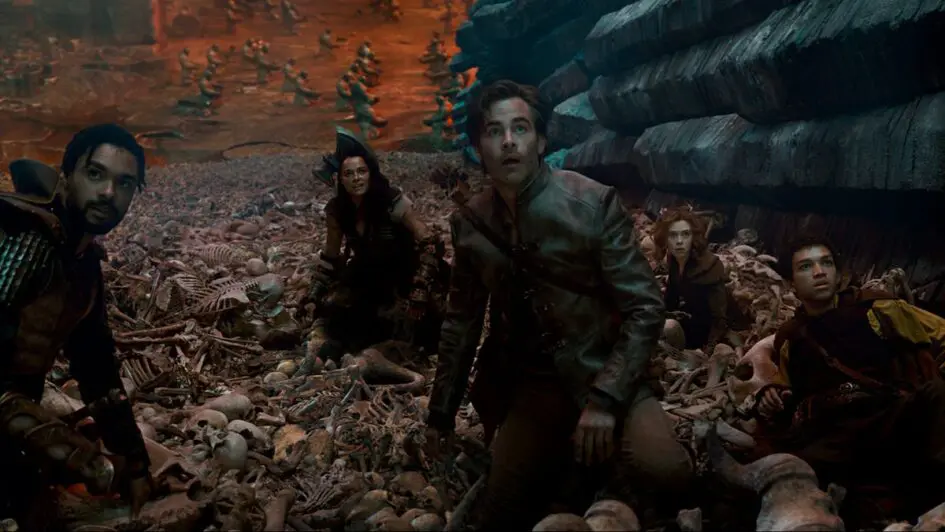I have been a fan of role-playing games (RPGs) for many years. For those not in the know, an RPG is a game where players take on the persona of the character they are playing. You can become a galaxy-renowned smuggler who sympathizes with a rebel group, a bard who sings the tales of his companions, or even an evil magician who plays his “friends” as fools to gain an important item he needs to rule the world. The stories that can be told in these games are limitless, driven only by the imagination of the players.
You can really break down RPGs into three major types. Live-action games (LARPS) are the least played, but actually allow players to use padded weapons and armor to actually fight one another. In the virtual world, you have World of Warcraft, possibly the largest massively multiplayer online role-playing game (MMORPG) ever created, but the granddaddy of them all would be the Dungeon & Dragons series. This game has been in print since 1974 and has spawned five updates to the core publication, as well as a multitude of offshoot games. The ease of entry for new players, coupled with a vast selection of character types has made D&D the best-known and best-selling RPG in the world.
While online gaming is very popular, it was only a matter of time before Hollywood capitalized on some classic games. From 2000 to 2012, three films based on the D&D world were made: Dungeons & Dragons (2000), Wrath of the Dragon God (2005) and The Book of Vile Darkness (2012). And in 2016, Legendary Pictures offered MMORPG fans Warcraft.
Each of these films were major flops at the box office, with the majority not even making back their budgeted costs. Even critics hammered these poor attempts, seeing them for what they were: cash grabs. These movies were made using name recognition as pretty much the only thing that separated them from being your average SYFY flick. It seemed like no one was interested in making a quality movie that actually felt like it was in the universe they were named after.
Recently, though, my hopes have been lifted. In March, directors Jonathan Goldstein and John Francis Daley released Dungeons & Dragons: Honor Among Thieves. The latest D&D entry focuses on Edgin Darvis (Chris Pine) and Holga Kilgore (Michelle Rodriguez), two thieves who want nothing more than the thrill of the chase. However, during an attempt to steal the Tablet of Reawakening (to resurrect Edgin’s murdered wife), the duo is captured while allowing their accomplices Simon (Justice Smith), Forge (Hugh Grant), Sofina (Daisy Head) and Edgin’s daughter, Kira (Chloe Coleman), time to escape.
After spending two years as prisoners, Edgin and Holga escape to Neverwinter, a land now ruled by Forge. Learning that Sofina is a Red Wizard (a band of evil spellcasters), it is up to Edgin, Holga, Simon, Kira and new friends Doric (Sophia Lillis) and Xenk (Regé-Jean Page) to prevent the people of Neverwinter from being turned into an undead army.
Two things stand out to me when comparing Honor Among Thieves to the previously mentioned D&D films, particularly Warcraft. First, the studio, Paramount Pictures, really seemed to stay out of this movie, only giving directors Goldstein and Daley the support needed to make their visions real. Too many times, studio execs get involved to a level that turns into a detriment of the film’s quality, seemingly valuing profits over storytelling. But it is clear that this did not happen, based on the star power of Chris Pine, Hugh Grant, Michelle Rodriguez and Bradley Cooper (in a cameo role). Having these well-known names as part of this production was a great step in proving the desire for this movie to be successful.
The second thing that stood out to me was how true to the lore of D&D that Honor Among Thieves was presented. Everything in the film, from the names of lands, the archetypes of characters and the spells used popped right out of the pages of the game’s multitude of books. They did it in a way that was not hard to follow, even for people who had never played the games.
If we look at Warcraft, that film used some named characters from the series, which would have been fine. But these popular NPCs (non-player characters) were turned into dull, one-dimensional beings. Gul’dan, an incredibly powerful warlock in the game, was almost indistinguishable from the other orcs in the film. In fact, I got him mixed up with Durotan (the “good” orc) many times, which should never happen. And beyond those two orcs, the humans were even less likable. The entire Warcraft film could have been a cutscene in the online game.
But when we look at Honor Among Thieves, we don’t get that. Each character is well written, fleshed out with a compelling backstory, conveying the exact emotions from the audience. Bad guys are supposed to be despised. Good guys are supposed to be cheered. There should be a clear line for most characters, and that is evident. Knowing the film is both a financial and a critical success, others agree.
Dungeons and Dragons: Honor Among Thieves is a five-star film in my book. The story is easy to follow, regardless of your experience with role-playing games. The cast acted their hearts out to ensure the personalities of the heroes and villains were distinct. Some critics have bemoaned the film followed the Marvel method of hiring comedy directors to make a blockbuster, but what works for the MCU can work in other genres, as well. I see nothing wrong with mixing an epic story and amazing action sequences, with some well-placed humor.
It makes Dungeons and Dragons: Honor Among Thieves a must-see film this summer for everyone.

